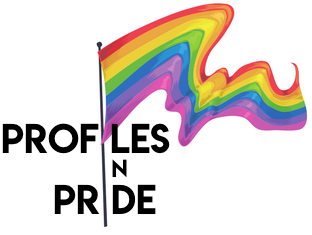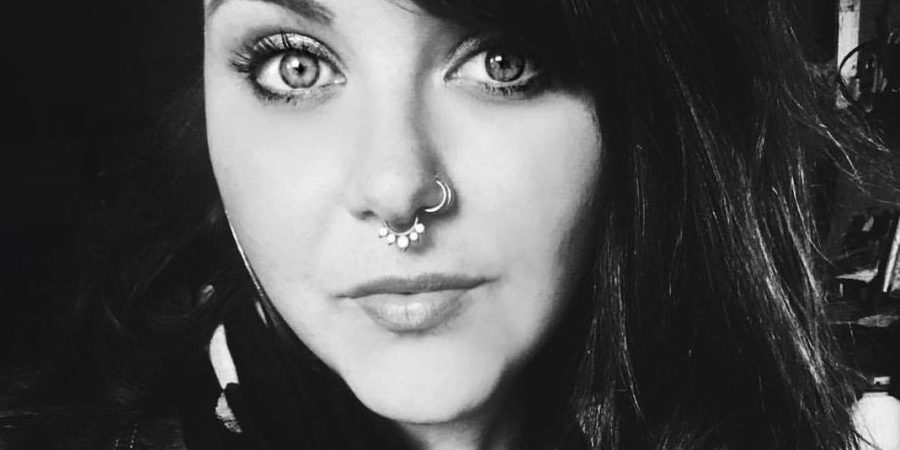Growing up in a very small town, Jamie Thrower wasn’t aware of all of the possibilities available to her. With no visible queer community, it didn’t occur to her that she could ever date women, and with an education in public health, she surely never imagined she could one day work for herself as a successful photographer.
But over time, as she developed her queer identity, she learned that there was a large community out there of people like her — and that her creative skills were in demand from that community.
Thrower, now 30, lives in Oakland, California and runs her own queer-focused photography studio, Studio XIII Photography. “Oakland is becoming quite a queer mecca,” Thrower says. “There’s a huge population of queer women, which I’m finding really interesting. There aren’t the dedicated spaces like there are in San Francisco, but they just opened an LGBTQ community center, and I think there are now two to three gay bars, so we’re getting there!”
Thrower specializes in photographing LGBTQ+ engagements, weddings, births, and families, and she also documents LGBTQ-focused events like rallies and Pride festivals in and around the Bay Area. While the event photography was once a passion project, she’s now getting paid by outlets like The Advocate to capture these events.
Here is Thrower’s journey of embracing her queerness, finding her niche as a photographer for the queer community, and pursuing passion for working with the HIV/AIDS population.
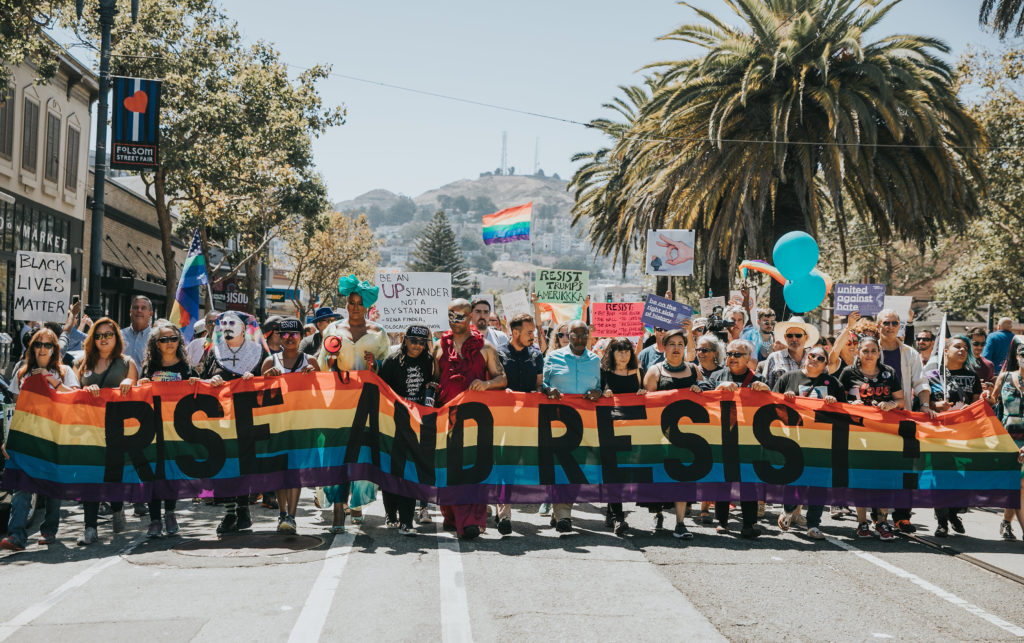
Profiles in Pride: What was your journey to coming out and living openly as a queer person?
Jamie Thrower: I think my first memory of really coming to understand or just being introduced to anything gay was when Ellen Degeneres came out. I remember asking my mom what being a lesbian meant. She, in her very simple way, explained, “It’s when one girl marries another girl.”
And I thought about it for a second, and my biggest question was, “Well, can they both wear dresses, or does one of them have to wear a tuxedo?” I was really hoping I didn’t have to wear a tux. And she said something like, “I’m pretty sure they can both can wear dresses.” From then on, I was excited, because, “You get to marry your best friend? Why would you choose anything else? That’s genius!”
In high school, I definitely knew that I was gay, but I grew up in a really, really small town, and there just wasn’t any real sort of visibility in queerness. It was a small Wine Country town in Northern California. People there now are very accepting, and have more LGBTQ visibility, both in the community and the schools, but as a teenager I didn’t really have the exposure to anyone else who was like me.
It was before the time of social media, and I think Myspace had just barely begun. So there just wasn’t that connection. Even if you’re in a small town now, kids are able to reach out to each other people and see so much media coverage of young people and other generations of people who are living these really great queer lives. I just didn’t know that it was possible for me. I was kind of like, “Oh well, I’ll just say I’m bi, I think maybe my attraction to women is just pure attraction, because I don’t know that I could really ever create a life and an identity as a lesbian woman.”
But then when I got to college — I went to college in San Francisco — and I just felt like my possibilities just opened up to me, which was great. By the time I really started becoming more visible and just like settling into realizing that yes, I’m gay, and it’s OK to completely be in that world, I was amazed at how many people were not surprised.
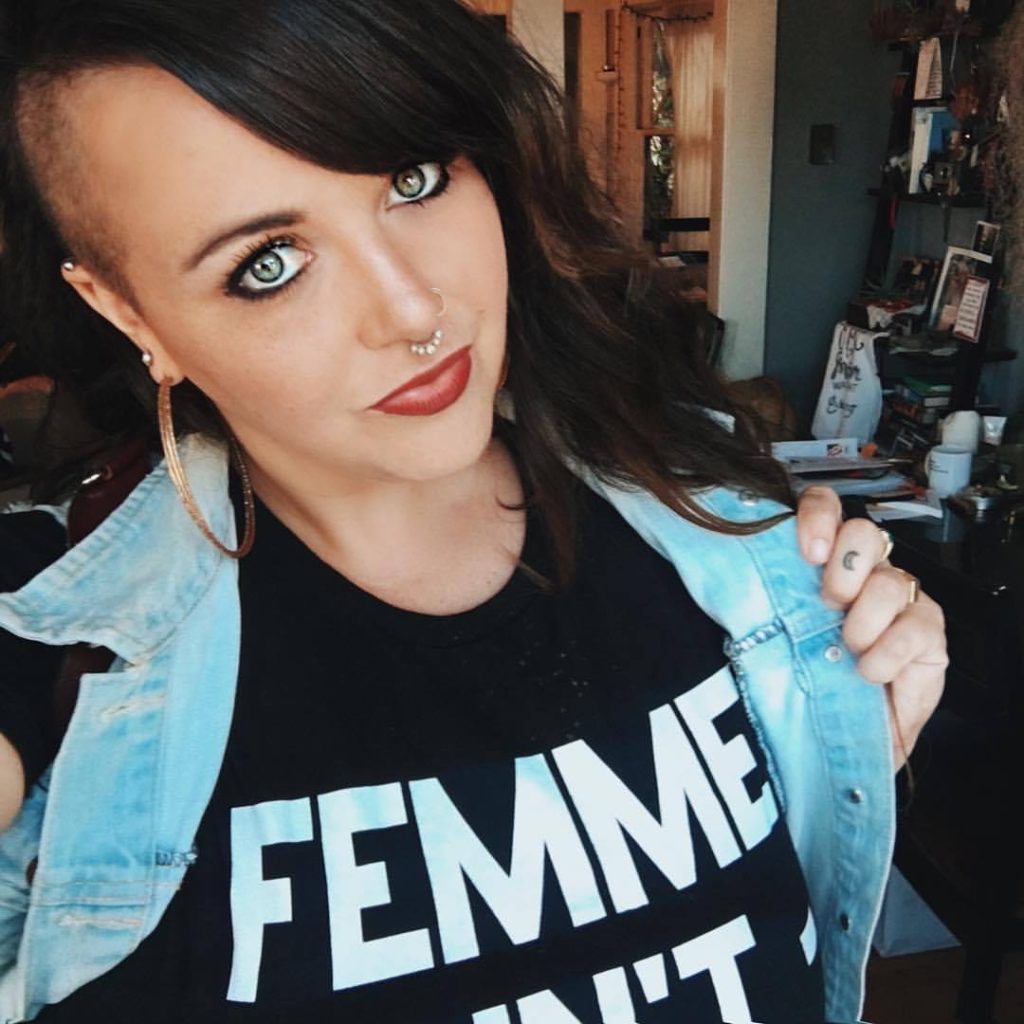
I didn’t really do a big coming out or anything; it was just kind of this transition into “this is my girlfriend now,” or like “these are the people I hang out with,” and just identifying myself as a queer woman. All my friends and family were really supportive.
I think it’s interesting how many straight people kind of expect you to have this big sit-down talk with them and say, “Hey, I want you to know I’m gay,” and it’s supposed to be a big revelation, and everyone’s supposed to cry or whatever…but I’m not sure I really believe in that, because that’s not something straight people really have to do. It was just kind of like, “This is who I’m dating, and this is who I am.” It was a pretty easy transition.
And then I feel like as I’ve grown into myself and into my thirties, I just want to embrace that part of me. It became a really big community and support and culture for me, which I think is really important. It’s been a really positive journey, which I feel very lucky for.
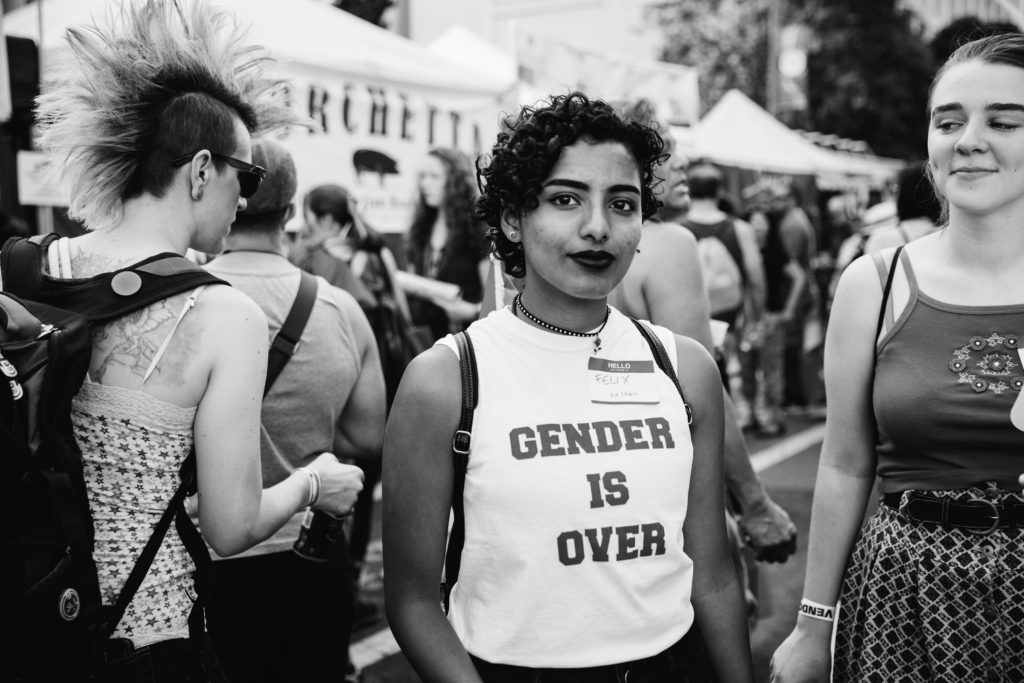
PIP: What was your career path to becoming a photographer for the queer community?
JT: I actually went to school for public health, and I got a degree in Community Based Health Education and wanted to do work with the HIV/AIDS community, which I still do a lot of volunteering with. But I was in that weird moment between college and grad school where I just needed to find a job to pay my bills. I found myself getting back into the art world. Photography was something I was always interested in, but didn’t think was possible as a career.
I think that’s a common thread in my whole life — just being like, “I’m not sure that’s possible for me!” And actually realizing it is. So I just started photographing coworkers, and my family, and friends. Then I was kind of shocked when people started asking me how much I’d charge for a photoshoot. And I was like, “What do you mean, like money charge?”
Then one of my friends took a chance on me for their wedding, and it just kind of took off from there. I started my business thinking that I’d do mostly graphic design and some photography. For a while I even dabbled in floral designs, so my business has gone gone through so many transitions. I started as a graphic design studio, then I did photography and graphic design, then I did flowers. I was just kind of doing anything anyone would pay me for.
Then I realized that was too much to be doing so many different things. And I really believe when you kind of specialize in something, it makes people really believe in you, because you have that one thing that you’re really good at. It doesn’t mean you can’t do other things, but to have that focus is really important.
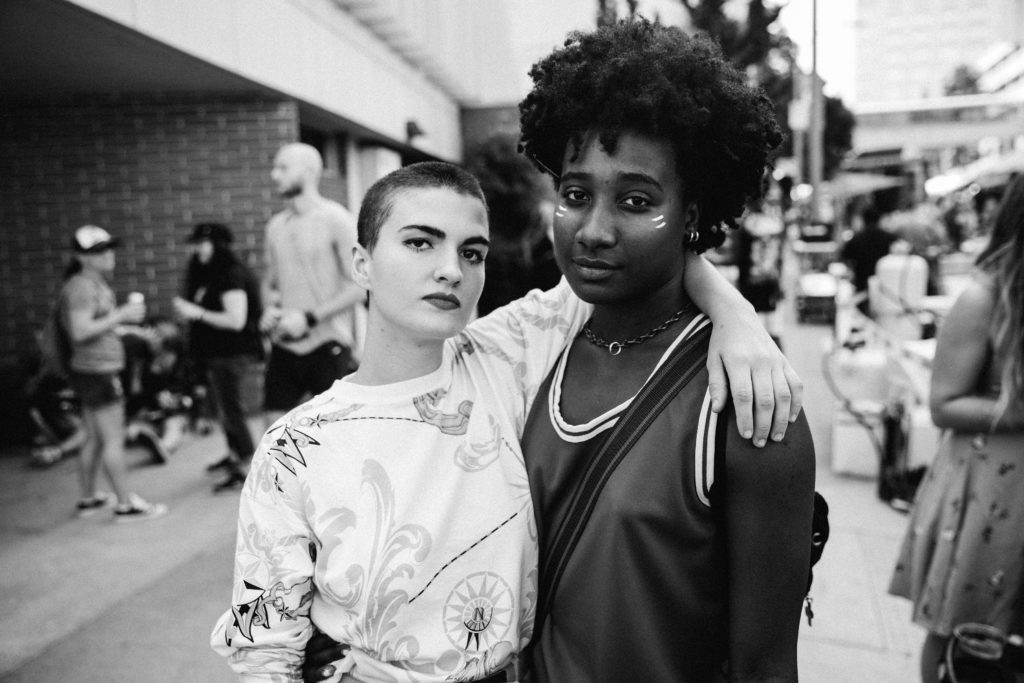
So I decided to focus on only photography about three years ago, and then in the last year and a half or two years, it was striking to me how many couples were coming to my website and getting to know me and then saying, “We want you to shoot our wedding, not just because we love your work, but because you’re a queer woman, and we feel like we don’t have to explain ourselves.”
I was like, “Wow, how interesting.” Then they’re asking me for others — they’d say, “We want to keep the vendors for our wedding in the community. So do you know a queer DJ or wedding planner? Someone who specializes or identifies somewhere on the spectrum as LGBTQ?”
So I thought, “What if I specialized in that, and that’s the one thing I focused on?” So I just overhauled my business in that way, and I feel so good about that! The clients and connections that I’m making feel so meaningful, and to be able to — especially in the wedding industry, which is really heteronormative and really white — to have a studio that when you come to my website, you only see queer couples and of all different backgrounds and identities. I think it’s helping bring visibility into the wedding world, and I think that’s something that we really need. I’m pumped about it; I’m working with people I love.
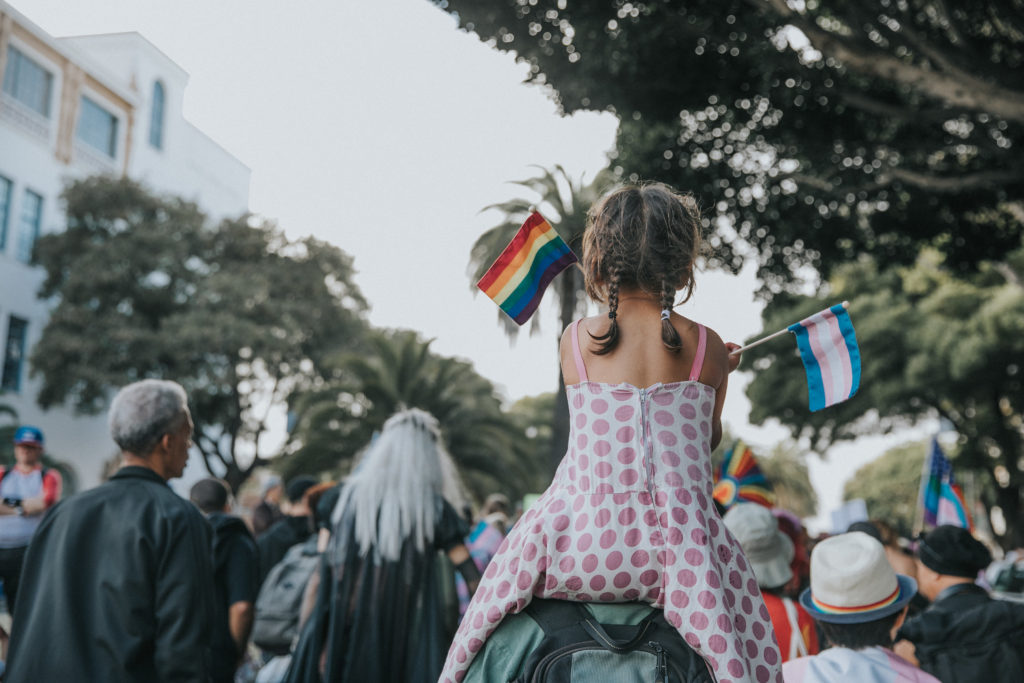
PIP: We first encountered you in San Francisco when you were photographing The Trans March for Pride, and later saw you photographing The Dyke March. Do you photograph events like that as passion projects?
JT: I started photographing a lot of different events like that and it’s something that really makes me come alive. I think the first one that I ever did that really pulled me in was in 2015 when marriage equality was made legal in the States, and all the text messages and phone calls were coming in. My friend who was in his sixties and had lived through so many of the different movements in San Francisco called me. He was like, “Let’s go to the Castro, I called in sick to work, this is a big day.” I immediately said, “Yeah, I’m on my way!”
I grabbed my camera, and to be able to walk around the city, especially the Castro District, and capture those emotions and feelings that everyone was sharing was really powerful.
So then it just became a way to process any feelings that were going on. When I was going to protests and marches, and sit-ins, and to be capturing these moments in time felt both important to me, but also a way to process my own feelings and share them with the rest of the world.
When I started putting this work out on the internet, different foundations and companies were seeing my photos and wanting to have different events and things captured for them, which was really cool. So I’ve been doing freelance work for The Advocate and The Evelyn & Walter Haas Jr. Fund, so it’s been really nice to know that they’re hiring me because of the way that I capture things, but also because they know that I have skin in the game for whatever event it is. I really, really care. It’s not necessarily like, “Oh, who’s gonna go and get paid to go to this event.” I really care about the things that I’m going to.
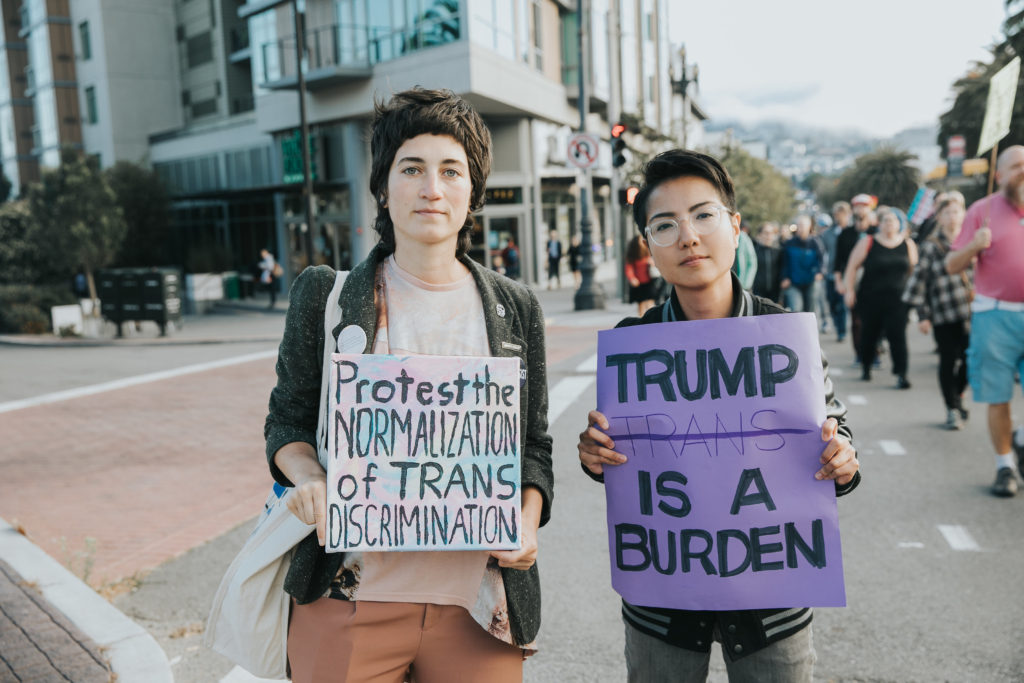
PIP: We saw that The Advocate featured some of your Pride march pictures from last year; were you there on assignment, or did they just find your work and pick it up?
JT: They picked that up. That’s how I first started; that’s how they first found me. I just photographed it for myself, just because I love doing that, and especially things like Pride, which I feel are very emotionally driven.
And especially last year, I felt like it took on kind of a new meaning—that people are both wanting to be really out and proud, but also with all this discrimination and different bullshit that the current administration has been perpetuating in the last year, people were really motivated to be out and speaking their minds
I wanted to capture that and put a blog put up, and The Advocate ended up picking it up. From then on, they’ve hired me to photograph other events, which is great, because I was going to them anyway. They’ll say, “So there’s a festival in San Francisco, would you want to photograph that?” And most of the time, I’m already there, which has been a really cool experience. To be able to capture my community in a way that is authentic is so important to me.
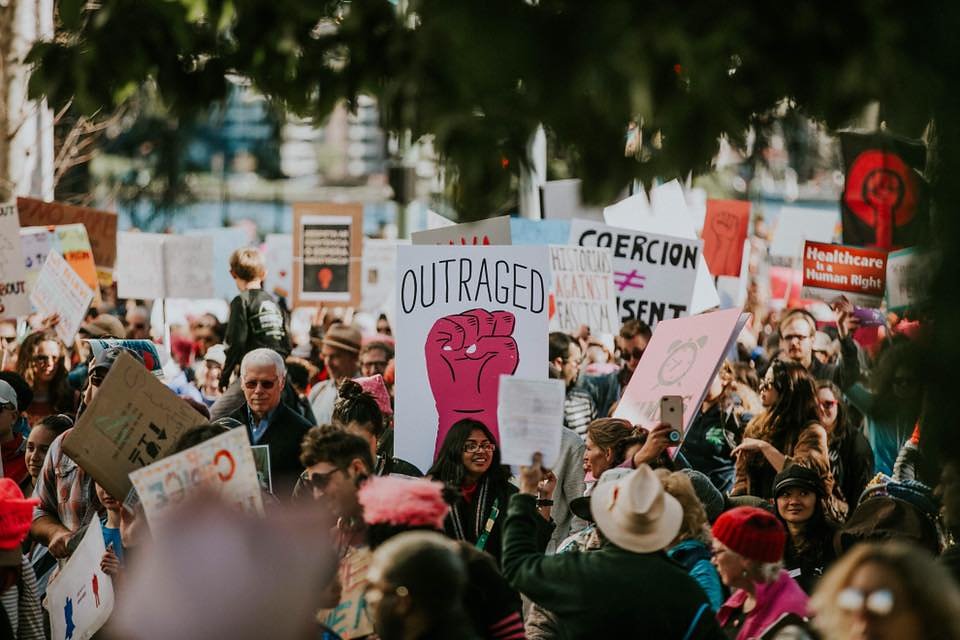
PIP: That’s amazing, congratulations! So besides photography, what are some of your passions?
JT: I love volunteering with the community. Like I said, I started off doing work with public health and HIV/AIDS studies, so I’ve been volunteering for the last 12 years for a camp called Camp Sunburst in Northern California. They also have one now in Kenya. It’s for kids who have been affected or are infected with HIV or AIDS. It’s been a really really powerful experience to be able to provide a fun summer camp experience for kids who don’t really get that. I was inspired by some of the kids who were coming to camp and was looking for a way to connect year-round, so I decided to get more involved in the foster care system.
I started volunteering as a CASA, which is a court-appointed special advocate for kids in the foster care system. It has been a really rewarding and challenging part of my life. But I feel like there’s so many different connections for the queer community, and HIV-positive community, and foster care. It’s all very interconnected, and it’s been really nice to be able to give back and volunteer in those ways, and those are all things that I’m super passionate about.
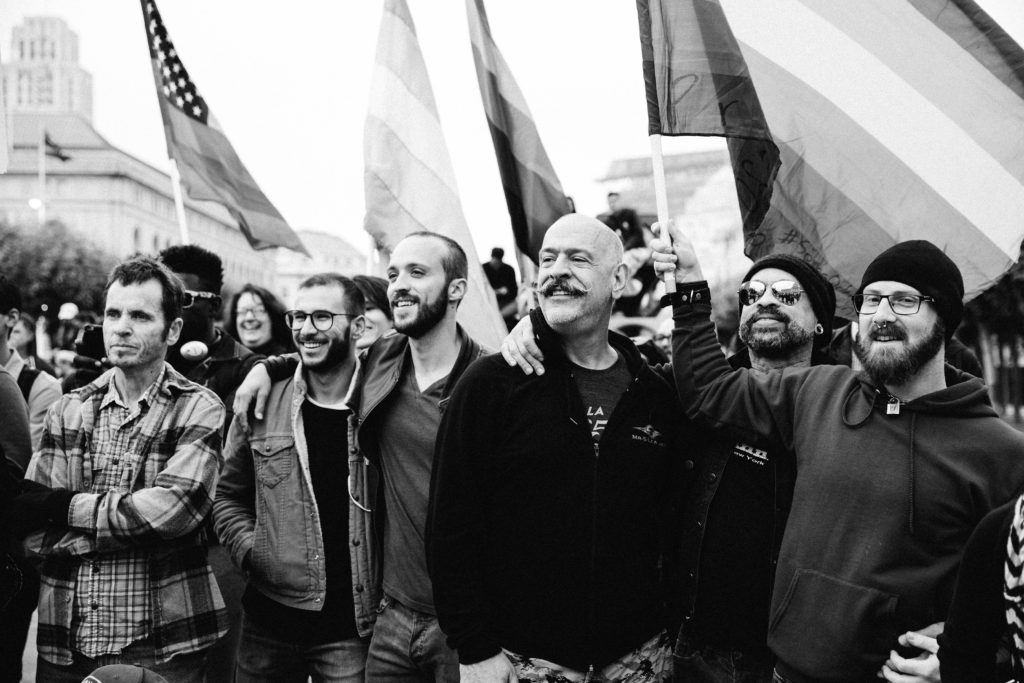
I’m really looking forward to working with the local LGBTQ Center here in Oakland, this year. I also did a passion project last year, which was highlighting different queer business owners around the Bay Area. And I think connecting with other people who are doing work in the community or who have successful businesses or who are starting businesses is so integral to keeping our LGBTQ community thriving.
I’m sure you feel that way about your project too — to just be like, “Here are people who are doing really, really great stuff.” I’m so proud to be a queer woman, a business owner, and to be a part of this incredible community that is consistently working to make the world a better and more inclusive space. It’s humbling and heart warming.

Keep up with Jamie on Instagram at @jamie_thrower and @studioxiiiphotography.
